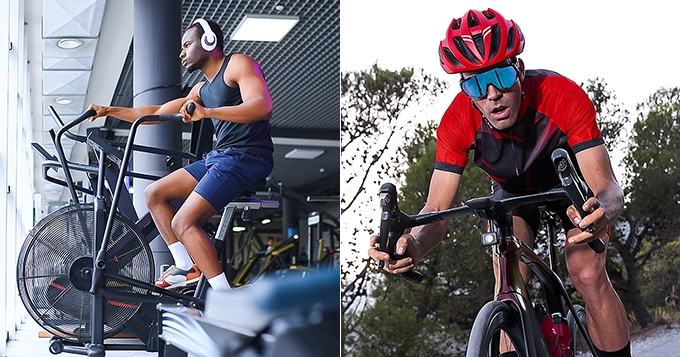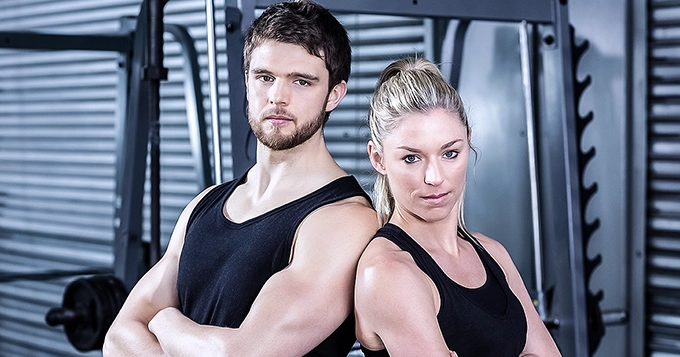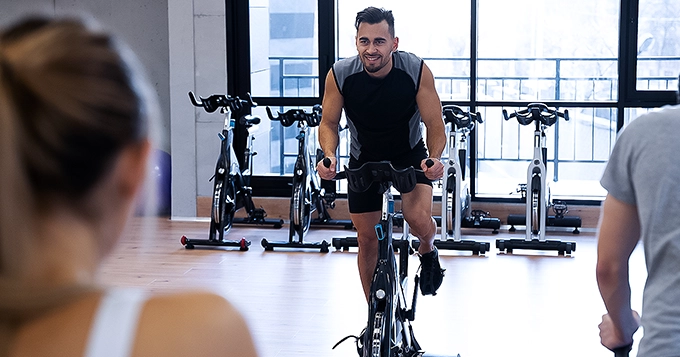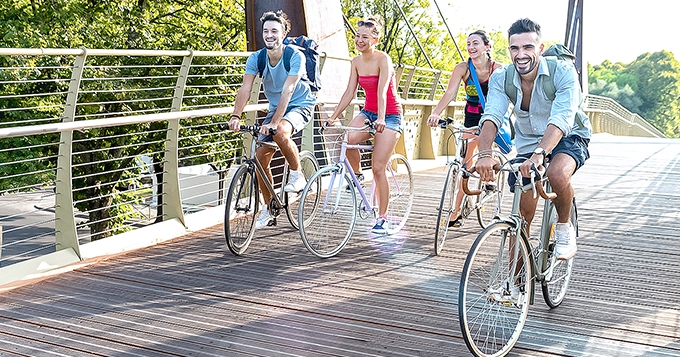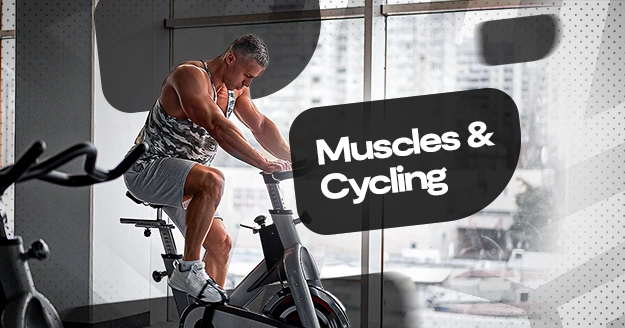Does cycling build muscle?
Yes!
If you want to enhance your muscle-building potential while enjoying the great outdoors, look no further than regular cycling. Cycling isn’t just about getting from the start to the finish line—it’s a fantastic way to sculpt your muscles and improve your overall fitness.
What Muscles Do Cycling Build?
Cycling is an excellent full-body workout that engages various muscle groups. Here’s a breakdown of the main muscles worked during this activity:
- Quadriceps (Thigh Muscles): The quadriceps muscles, located at the front of the thighs, are heavily engaged during cycling to extend the knee and push the pedals downward.
- Hamstrings: The hamstrings, located at the back of the thighs, are activated during the upstroke phase of cycling to flex the knee and pull the pedals upward.
- Gluteal Muscles (Glutes): The glutes, which consist of the gluteus maximus, medius, and minimus, are in charge of hip extension and are essential for cycling power generation.
- Calf Muscles: The calf muscles, including the gastrocnemius and soleus, are engaged to push the pedals downward and provide stability during the pedaling motion.
- Hip Flexors: The hip flexor muscles, located at the front of the hips, are activated to lift the leg during the upstroke phase of cycling.
- Core Muscles: Does cycling build muscle around your core? Cycling requires core stability to maintain proper posture and balance on the bike. The core muscles, including your obliques, abdominals, and lower back muscles, work to stabilize the pelvis and spine during cycling.
- Upper Body Muscles: While the primary focus of cycling is on the lower body, the upper body muscles also play a role in providing support and control. Muscles in the arms, shoulders, and upper back are engaged to steer the bike, maintain balance, and support the upper body’s weight.
Why Cycling Is Great for You?
Building Muscle
Cycling promotes the development of lean muscle mass, leading to a more defined and toned physique. While cycling primarily targets your lower body muscles (glutes and thighs), it also contributes to overall muscle growth and strength improvement.
Increases Endurance and Stamina
Endurance is key to building muscle effectively. Incorporating regular cycling into your fitness routine will gradually increase your cardiovascular endurance and stamina. This allows you to push yourself harder during workouts, increasing muscle gains over time.
Promotes Fat Loss
Cycling is an excellent calorie-burning activity that can help you shed excess body fat while simultaneously building muscle. As you cycle, your body taps into stored fat for energy, resulting in a leaner physique and more defined muscles.
Low-Impact Exercise
Unlike high-impact activities like running or jumping jacks, cycling is gentler on your joints. This low-impact nature reduces the risk of injury, allowing you to sustain long-term muscle-building progress.
Versatile and Accessible
Cycling is accessible and versatile. Whether you prefer mountain trails or leisurely rides around your neighborhood, there’s a cycling option for everyone. Additionally, cycling can be added to your daily routine, such as commuting to work or running errands, making it easy to stay consistent with your workouts.
Cross-Training Benefits
Cycling complements other forms of exercise, such as strength training and flexibility exercises. By incorporating cycling into your cross-training regimen, you’ll improve overall fitness, enhance recovery, and prevent workout burnout.
How Long Does it Take to Build Leg Muscle Cycling?
Can biking build leg muscles? Yes.
The time it takes to build leg muscle through cycling varies based on factors such as training intensity, frequency, individual genetics, and diet. With consistent cycling and proper nutrition, you may start noticing improvements in leg strength and muscle size within a few weeks to a few months.
A study found that participants in a brief, intense cycling routine three times a week for 12 weeks, involving only four minutes of intense cycling per week, observed enhancements in leg muscle size and endurance.
Gradually increasing the intensity and duration of your rides, along with incorporating strength training exercises targeting the leg muscles, can accelerate muscle development over time.
Effect of Cycling on Body Shape
Cycling can have a significant impact on body shape, helping to sculpt and tone various muscle groups while reducing overall body fat. Regular cycling can help you get a leaner, more defined body, especially when paired with a healthy diet. Cycling also engages the core muscles for stability and balance, contributing to a firmer midsection.
Over time, consistent cycling can lead to a more athletic and proportionate body shape, with reduced fat and increased muscle definition.
Indoor vs. Outdoor Cycling
Indoor and outdoor cycling both offer unique benefits and can be excellent choices depending on your preferences and fitness goals. Here’s a comparison of indoor vs. outdoor cycling to help you decide which option is best for you:
Indoor Cycling:
- Weather Independent: A significant advantage of indoor cycling is its immunity to weather conditions, allowing for consistent training regardless of outdoor circumstances. Whether it’s snowing, scorching hot outside, or raining, you can still enjoy a productive workout indoors.
- Convenience: Indoor cycling can be incredibly convenient, especially if you have a stationary bike at home or access to a gym with indoor cycling classes. You can work out whenever you want without worrying about traffic, safety concerns, or finding a suitable route. It also eliminates commuting time and logistical planning for outdoor rides.
- Controlled Environment: Indoor cycling allows you to control various factors such as resistance, speed, and intensity, making it easier to track your progress and tailor your workouts to your fitness level and goals.
- Safety: Indoor cycling negates outdoor cycling risks, including traffic, road hazards, and unpredictable terrain, enhancing safety. This can be particularly beneficial for individuals who are new to cycling or recovering from an injury.
- Community and Motivation: Many indoor cycling classes offer a supportive and motivating environment, with instructors guiding you through challenging workouts and fellow participants providing encouragement. The sense of camaraderie can help keep you motivated and accountable.
Outdoor Cycling:
- Scenery and Exploration: Outdoor cycling allows you to enjoy scenic views, explore new routes, and connect with nature. Whether you prefer cycling through urban landscapes, picturesque countryside, or challenging mountain trails, outdoor cycling offers endless opportunities for adventure.
- Fresh Air and Vitamin D: Cycling outdoors exposes you to fresh air and natural sunlight, which can boost mood, energy levels, and overall well-being. Getting sufficient vitamin D from sunlight is essential for bone health and immune function.
- Variety and Challenge: Outdoor cycling presents a variety of terrain and environmental challenges, such as hills, wind resistance, and changing weather conditions. This variability can help improve endurance, strength, and mental toughness.
- Social Interaction: Cycling outdoors provides opportunities for social interaction and camaraderie, whether you’re cycling with friends, joining group rides, or participating in cycling events and races. Sharing the experience with others can make your rides more enjoyable and fulfilling.
- Functional Fitness: Outdoor cycling engages stabilizing muscles and requires balance and coordination, contributing to functional fitness and overall athleticism. It also provides a practical mode of transportation for commuting or running errands.
How to Incorporate Cycling in Your Routine
Incorporating cycling into your routine is a fantastic way to boost your fitness, improve your mood, and enjoy the outdoors. Here are some tips to help you integrate cycling into your lifestyle seamlessly:
- Set Clear Goals: Determine your objectives for cycling, whether it’s improving cardiovascular fitness, building muscle, losing weight, or simply enjoying recreational rides. Setting specific, measurable goals will help keep you motivated and focused.
- Start Slowly: If you’re new to cycling or getting back into it after a break, start slowly and gradually increasing your rides’ duration and intensity. Begin with shorter, easier rides and progressively build your stamina and endurance.
- Schedule Regular Rides: Treat cycling like any other appointment or commitment by scheduling regular rides into your calendar. Whether it’s a morning ride before work, an evening ride with friends, or a weekend adventure, consistency is key to making cycling a habit.
- Mix It Up: Keep your cycling routine exciting and varied by exploring different routes, terrains, and cycling disciplines. Try road cycling, mountain biking, trail riding, or indoor cycling classes to keep things interesting and challenge your body in new ways.
- Combine Cycling with Other Activities: Integrate cycling into your daily activities by commuting to work or running errands by bike. Not only does this save time and money on transportation, but it also allows you to sneak in extra exercise throughout the day.
- Join Cycling Groups or Clubs: Connect with like-minded individuals by joining cycling groups or clubs in your area. Group rides provide social support, motivation, and opportunities to learn from more experienced cyclists while exploring new routes and destinations together.
- Track Your Progress: Keep track of your rides, distance, speed, and other metrics using a cycling computer, smartphone app, or fitness tracker. Monitoring your progress allows you to set new goals, track improvements, and stay motivated.
- Invest in Proper Gear: Invest in a quality bike, helmet, cycling shoes, and other essential gear to ensure a safe and comfortable riding experience. Proper equipment not only enhances performance but also reduces the risk of injury.
- Listen to Your Body: Listen to your body’s signals and adjust your cycling routine accordingly. Remember to allot time for proper rest and stay hydrated. Give your body the nourishment it needs for your cycling activities.
- Have Fun: Most importantly, enjoy the ride! Cycling is a fantastic form of exercise and fun activity that allows you to explore new places, experience the freedom of the trail or open road, and connect with nature.
